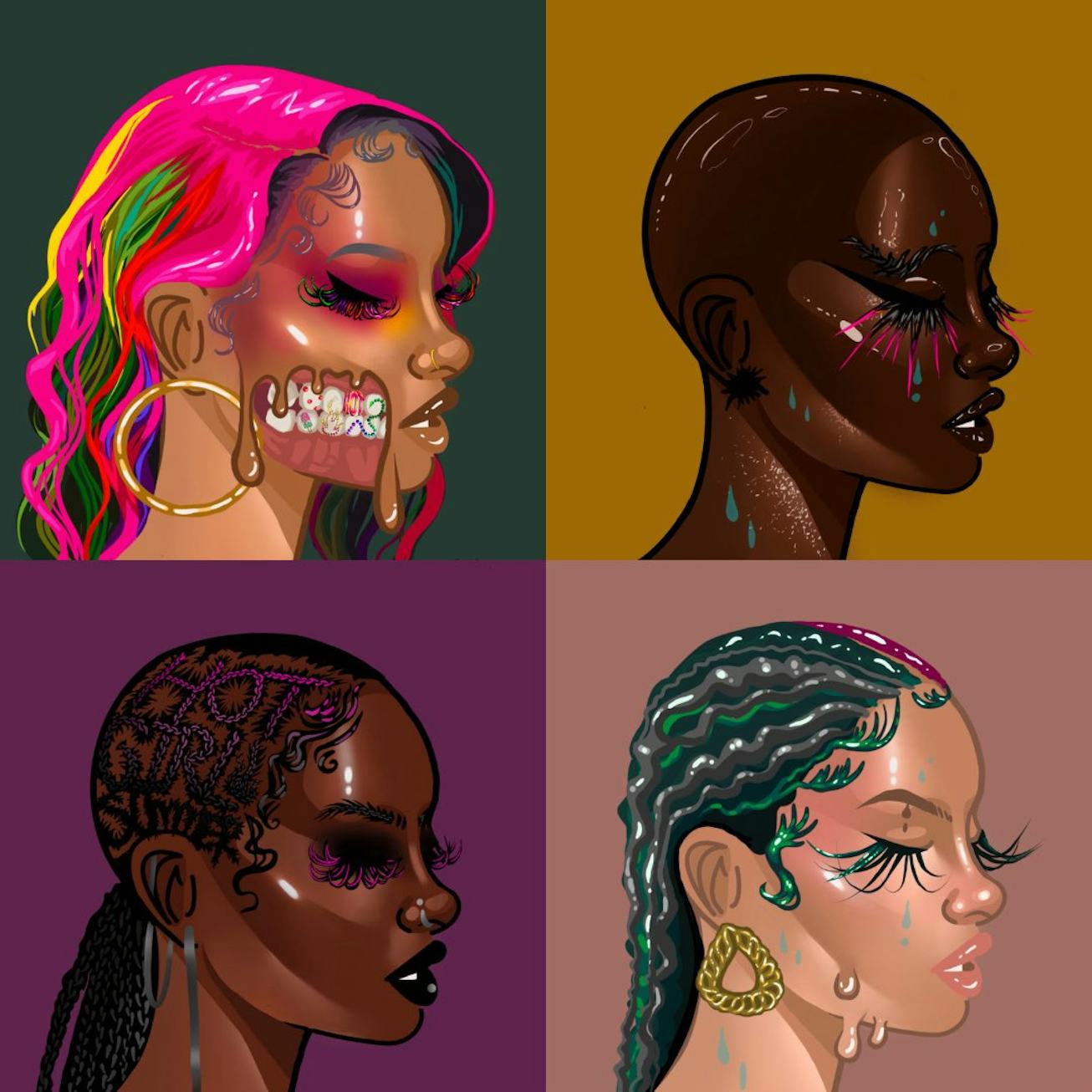Beauty
9 Black Artists Making Their Way In The NFT Space
You'll want to follow these creators right now.
In recent years, NFTs (non-fungible tokens) have been painted as the next frontier in the art world, with pieces selling for millions and NFT art exploding in popularity. The concept has been shaking up the art industry, and with so many people scrambling to get their (metaphorical) hands on the digital files, artists are brainstorming new ways to enter the digital market. But this market offers up so much more than just the Apes you may have seen — it’s provided a new realm of opportunity for many pioneering artists. As the traditional art world is unfortunately not historically an inclusive place (for example, between 2008 and 2018, the total combined auction value of work by African American artists only represented 1.2 percent of the global total), a new frontier is a welcome place of possibility for up-and-coming artists, especially those from groups that are chronically underrepresented.
As part of their Artist Spotlight Series, e.l.f Cosmetics has partnered with four talented Black NFT artists, Alana Simone (@TheBlackGirlNFT), Vanessa (@NessyFTee), Audrey Udemba (@ArtbyAudrey444), and Philip Kaiten (@vacuART) to highlight their work across the brand’s social channels and share their stories as well as their art. You can check out the #elfartistspotlight on Instagram for introductions to the artists, including brief interviews. But these are just a few names you’ll definitely want to watch out for in this space. Read on to check out these artists and more innovative Black creators, whether you’re looking to purchase NFTs or simply learning more about them.
@TheBlackGirlNFT
Alana Simone is the graphic designer, illustrator, and fine artist behind The Black Girl NFT Collection, which is “2500 hand-drawn artworks in the image of Black women with a various amount of traits.” Her work is available on OpenSea.
@NessyFTee
Vanessa is a Nova Scotia-based artist behind the brand MxSe, producing weekly NFT doodles from the art medium of acrylic and digital. Nessy’s latest collection “Muse” depicts Black experience and expressionism. Each individual piece uses shape, movement, and purposeful deconstruction of features to project the changing thought and creativity of the mind.
@ArtbyAudrey444
Audrey Udemba a.k.a. “Audrey the Artist” is a Georgia-based artist who creates traditional paintings as well as digital work. Their ethereal NFTs are made from oil and acrylic paintings.
@vactuART
Philip Kaiten is a 22-year-old self-taught digital artist from Brooklyn, who has been creating art digitally since he was 11 years old. His art often focuses on stylized portraits, which you can even have commissioned.
@PhiaWilson
Sophia Wilson is a New York-based photographer who created the first-ever NFT post on the Instagram app. Sophia has previously shot for Guess, Opening Ceremony, Fenty, Juicy Couture, Pepsi, Depop, Swarovski, and more.
@LanaDenina__
Lana Denina Cohen is a multidisciplinary visual artist based in Montreal. Combining digital art and painting, her art explores human relationships, morphological diversity, and body movements. A fan of bright colors, she strives to highlight faces and stories rarely told.
@4ur3lia
Aurélia Durand is an illustrator celebrating her Afro-descendants through proud and empowered colors. She recently launched her first NFTs collection with The Black Arts Project, a curated NFT project that celebrates and supports Black creativity.
@grelysian
Gossamer Rozen is a fine artist and tattooer in New York. Gossamer is the lead artist and art director of Woodies NFT and the creator of Mrammou NFT and Tigerbob. Gossamer makes art to understand their identity and connect to the world around them.
@TheBlackArtist_
@TheBlackArtist is a visual artist and model with a number of NFT collections. Their “Real life x” collection is a documentation of their personal experiences and struggles originally rendered with pencils and ink.
This article was originally published on
